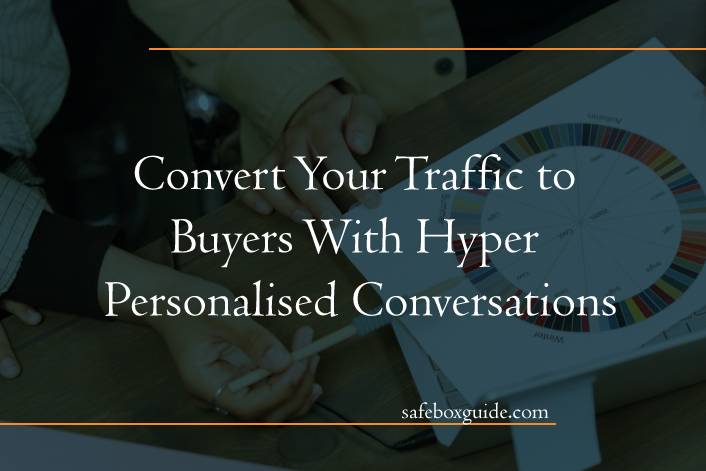In today’s digital age, businesses need to leverage the power of personalization to convert website traffic into paying customers. Personalization has become a critical component of a successful online marketing strategy, with customers expecting brands to deliver tailored experiences that cater to their unique needs and preferences. Hyper-personalized conversations are the next level of personalization, utilizing real-time data and advanced algorithms to deliver personalized content, offers, and recommendations.

What is Hyper-Personalization?
Hyper-personalization is the use of real-time data and advanced algorithms to deliver personalized content, offers, and recommendations. It takes personalization to the next level by tailoring messaging to each customer’s individual preferences, behaviors, and needs. Hyper-personalization goes beyond simply addressing customers by name or sending them an email based on their purchase history. It involves analyzing real-time data to deliver personalized messaging in real-time.
Why is Hyper-Personalization Important?
Customers are inundated with marketing messages daily. With so many brands vying for their attention, it’s important to stand out by delivering personalized experiences. According to a recent study, 80% of customers are more likely to do business with a company that offers personalized experiences. By delivering hyper-personalized conversations, businesses can increase engagement, boost customer loyalty, and ultimately drive sales.

How Can Businesses Implement Hyper-Personalization?
- Collect customer data: The first step in implementing hyper-personalization is collecting customer data. This includes their browsing history, purchase history, demographics, and behavior on your website. By collecting this data, businesses can gain insights into customers’ preferences, behaviors, and needs.
- Analyze data: Once customer data has been collected, businesses need to analyze it to understand customers’ needs, preferences, and behavior. This analysis can help identify patterns and trends that can be used to deliver personalized messaging.
- Personalize website experience: Using dynamic content and personalized messaging on the website can make customers feel like the business understands their needs. For example, if a customer has previously purchased a particular product, show them related products or offers that they may be interested in.
- Deliver hyper-personalized content: Use real-time data to deliver hyper-personalized content to customers. For example, if a customer has just added a product to their cart, offer them a discount or a related product. Use algorithms to analyze customer behavior in real time and adjust messaging accordingly.
- Use personalized messaging in emails and push notifications: Personalized messaging in emails and push notifications can make customers feel like the business is speaking directly to them. Use their name in the subject line, and include personalized recommendations based on their purchase history.
- Offer personalized support: Offering personalized support to customers, including chatbots that can answer their questions in real-time, can make them feel valued. Use customer data to tailor responses and provide relevant information.
- Follow up with personalized recommendations: Following up with personalized recommendations based on a customer’s purchase history can help build long-term relationships. For example, if a customer has just purchased a product, follow up with an email recommending related products or accessories.
- Use social media to personalize messaging: Personalizing messaging on social media can help businesses connect with customers on a personal level. Use their name in comments or messages, and provide personalized recommendations based on their behavior on social media.
Hyper-personalization is the key to converting website traffic into paying customers. By analyzing customer data, tailoring messaging to their individual preferences and behavior, and delivering hyper-personalized content in real time, businesses can increase engagement, boost customer loyalty, and ultimately drive sales. In today’s digital age, hyper-personalization has become a critical component of a successful online marketing strategy. By implementing these strategies, businesses can create long-term relationships with customers that go beyond simple name recognition and email segmentation.
However, hyper-personalization is not just about delivering tailored messaging and offers. It’s also about creating a personalized customer experience that makes customers feel valued and understood. This can include personalized support, follow-up recommendations, and even personalized packaging or thank-you notes.
In conclusion, hyper-personalization is a powerful tool for businesses looking to convert website traffic into paying customers. By collecting and analyzing customer data, tailoring messaging to their individual preferences and behavior, and delivering hyper-personalized content in real time, businesses can create a personalized customer experience that increases engagement, boosts customer loyalty, and ultimately drives sales. With customers expecting personalized experiences, businesses that fail to implement hyper-personalization strategies risk falling behind their competitors. By embracing hyper-personalization, businesses can create long-term relationships with customers and stay ahead in the ever-evolving digital landscape.

